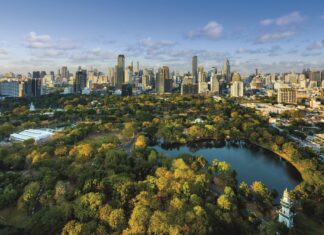Two articles in this edition highlight some of the complexities the water community faces in its efforts to balance multiple interests and factors.
One is the article on p14 exploring the reuse of wastewater – or, more accurately, used water – in agriculture. Concerns about the pressures on water resources are forever increasing, not least because of climate change. Planned reuse of wastewater then becomes a policy option to pursue in response, with a need to find agriculture’s place in that planned reuse.
The potential here is clear. As the article highlights, less than 20% of wastewater is treated to a usable level. Of this treated water, 2-15% is reused for irrigation.
At the same time, this issue’s article on the ‘slow pandemic’ of antimicrobial resistance (AMR) highlights the dilemmas of trying to provide solutions. On the one hand, wastewater in this instance is the interface where microbes are exposed to antimicrobials – so is seemingly part of the problem. But the article signals that wastewater treatment tends to improve prospects around dealing with AMR – and so is also seemingly part of the solution.
Climate change is compounding the challenges of balancing multiple interests and factors around water. The Analysis article opposite summarises the findings of a report drawing attention to the plight of the most vulnerable section of global society – refugees.
Climate change is just part of the fragility that underpins this vulnerability. Conflict and, within that wider picture, forcible displacement have complex roots. But the climate dimension is there – in terms of the fact that a very high proportion of people fleeing their homes do so in countries where there is exposure to climate-related hazards, and also in terms of the more specific evidence for climate-related hazards being a driver for displacement.
A more recent report, The Global Threat of Drying Lands: Regional and global aridity trends and future projections, published by the UN Convention to Combat Desertification for its COP16 meeting in December, raises a wider-reaching concern. The report states that 77.6% of Earth’s land experienced drier conditions during the three decades leading up to 2020 compared with the previous 30-year period. Drylands expanded by about 4.3 million km2 and, as the planet continues to warm, the report’s worst-case scenario projections suggest up to 5 billion people could live in drylands by the end of the century.
This all emphasises the need for cohesive water sector strategies that have the buy-in of stakeholders.
In the article on p25, we see how Fiji, one of IWA’s newer Governing Members, is embarking on implementation of its 2050 water sector strategy. The strategy is built on a national collective planning exercise and we can see that IWA’s scope is of clear relevance to priorities highlighted. This includes core concerns such as addressing non-revenue water and regulatory matters such as tariffs. So too for the task of combining use of both centralised and decentralised approaches to wastewater treatment.
The water community around the world faces challenges in advancing sector strategies, especially given the scale of the task of balancing multiple interests and factors. Given such prospects, the need for solidarity and sharing of experiences is greater than ever.
Keith Hayward, Editor








